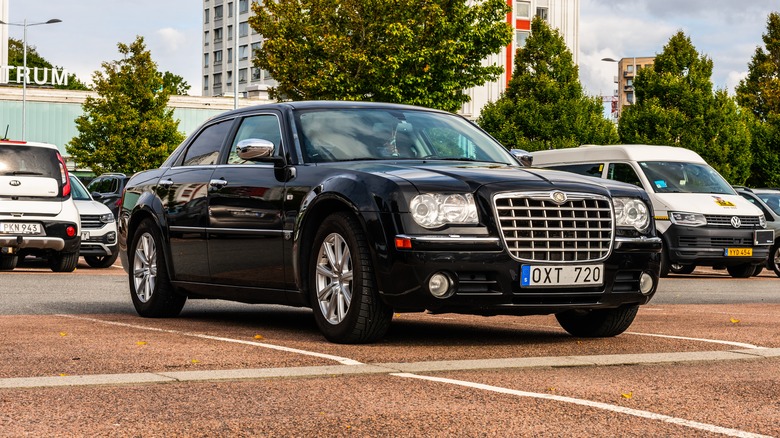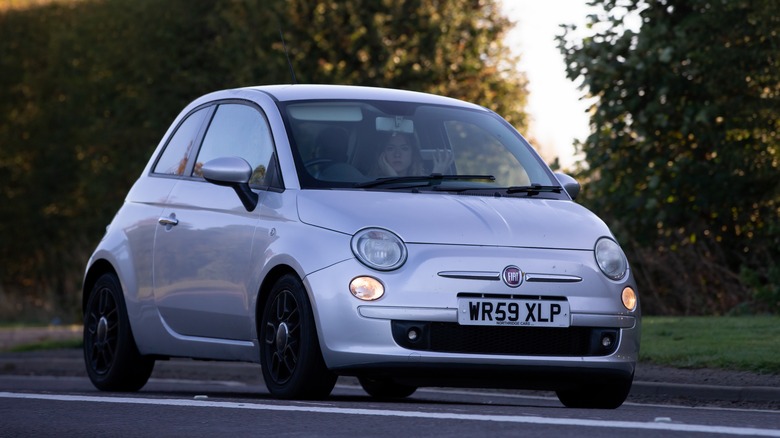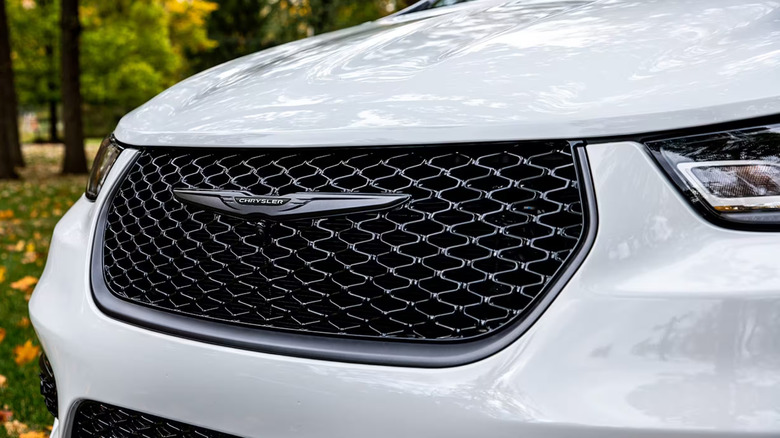The Story Behind Chrysler's Merger With Fiat
It should not come as much of a surprise that the top three vehicles sold in the United States in 2023, according to Car and Driver, are all pickup trucks. In first place is the Ford F-series, the true king of the motor vehicle game, and in second, you have the Chevy Silverado. Both of these trucks come from two of the "Big Three" American car companies, Ford and General Motors. These two are the poster children for American motors in style and ethos. However, it is a "Big Three," not a "Big Two."
The third highest-selling vehicle is the RAM truck, a spinoff of Dodge. You might assume that Dodge is just as American as Ford and GM. After all, the company started in Michigan, just like those two. Ford and GM still have their headquarters in the Great Lakes State. However, Dodge is now a subsidiary of a multinational corporation called Stellantis, and its headquarters is in Amsterdam.
Since 1928, Dodge has been owned by what has long been the third company that makes up the "Big Three," Chrysler. Over the last near century, Chrysler has acquired several car brands along the way, such as the now-defunct Plymouth or the still-kicking Jeep. This is no strange thing for a car company to do. GM owns Chevrolet, Cadillac, Buick, and GMC. What separates Chrysler from Ford and GMC, though, is that it became an acquisition itself rather than being the ones doing the acquiring.
Moreover, it merged with a company not from the United States, as Italian automaker Fiat took over the car company institution in 2009. Before we get into how this turned international, we need to go back to one of the most financially dark times in recent history.
Bailing them out
The Great Recession of 2008 affected everyone. The people hit hardest were, of course, those who were already struggling to begin with, but plenty of businesses suffered significant financial losses as well. Countless people were laid off in every single industry. The American auto industry was no exception to this.
While almost no regular person received financial aid from the government, President George W. Bush and the U.S. Congress did decide to bail out many large, multinational corporations, including both General Motors and Chrysler. In December 2008, it was revealed that the two companies would receive $13.4 billion by mid-January of the following year.
Chrysler had been cutting tens of thousands of jobs before this bailout, and the company had dropped 30% in sales and fallen to fourth place in the United States, with Toyota also beating it along with the other two "Big Three" members. The company was also in fairly new hands, as it had been purchased by Cerberus Capital Management in 2007 after a near-decade partnership with Daimler-Benz. It was in some serious trouble.
It is in this terrible state for Chrysler that Fiat enters the picture. In January 2009, Fiat purchased a 35% stake in Chrysler as a way to put itself back into the American market, which it had not been since the early 1980s. As it would turn out, their partnership would be more than just getting more Fiats out on American roads.
Bankruptcy and takeover
Just a few short months after Fiat's significant investment, Chrysler had to file for bankruptcy. Bankruptcy doesn't mean the company just goes away, but it also doesn't mean that Fiat just took over the company either. Fiat was able to take its 35% stake in the company that it sought after in January 2009, but a fellow junior partner would be the United States itself, which gave Chrysler an additional $8 billion. The principal owners, however, would be the United Automobile Workers, who took control of 55% of the company through a retiree trust when the deal was finalized in June 2009.
It would take two years, in which Chrysler was able to pay off its outstanding debts before Fiat would buy the shares of the company owned by the United States. After that, Chrysler was now an internationally owned company, though the union shares were still intact. Fiat wouldn't be able to buy those out until January 2014. So, after five years of the two companies being intertwined, they were finally one company, renamed Fiat Chrysler Automobiles. When the merger occurred, they decided to register their business in Amsterdam.
Fiat Chrysler Automobiles would not last long, though. If one precarious financial time required a merger, another one would require the very same thing.
The pandemic and a merger
Only a few years later would Fiat Chrysler Automobiles look to find another partner to merge with. In 2019, the company hoped to go into a 50–50 merger with the French motor company Renault, but FCA pulled out of the deal due to unease with the French government at the time. It then set its sights on Peugeot, and in December 2019, the two companies agreed to enter into that evenly split merger.
It would take until December 2020 before the European Commission approved the merger, which happened to be at the heart of the COVID-19 pandemic. Fiat Chrysler Automobiles may have been already looking for a new partner, but considering the adverse effects of the pandemic, which happened to be the time when people least required the use of cars, the company definitely could use some help.
After government approval, the shareholders of FCA and Peugeot approved the merger in the first week of 2021. The new company would keep its financial home in Amsterdam and be called Stellantis, finally scrubbing the company of the Chrysler name.
Chrysler still exists as a subsidiary. Going back to the list of the best-selling cars of 2023 so far, the Chrysler Pacifica minivan lands at 24, making it the best-selling minivan. That is available in both a gas-powered version and a hybrid, and it still makes its signature Chrysler 300 sedan. However, that is the extent of its line. For a name that was once right in line with Ford and General Motors as the "Big Three" of American cars, it is now just a small section of a much larger company that isn't even fully American. Maybe it's just a "Big Two" now.



